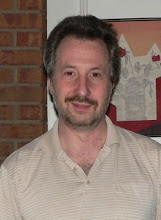by Philadelfia Flyers Alumni Assosiation

Bobby Clarke began to play for his home team, the Flin Flon Bombers, when he was eight. In the beginning, he was nothing special as far as his friends were concerned. Hockey in Flin Flon was the only pastime. The Flin Flon Bombers' arena seated 2,000 and was always packed. The Bombers were practically impossible to beat on their home ice. It took 10 hours to get to Flin Flon by bus from Winnipeg. It was such an ordeal to get there that opposing teams were too exhausted to turn in a good performance.
Playing for the Bombers in the 1967-68 season, Clarke racked up 168 points (51 goals plus 117 assists). That was the best performance in the league. By all accounts, Bobby should have been first in the draft, but there were rumors in the NHL that Clarke was a diabetic and most probably wouldn't be able to play in the top league because of that. Pat Ginnell, head coach of the Bombers, didn't waste any time. He made arrangements with the Mayo Clinic, one of the best hospitals in North America, and took Bobby to Minnesota.
The doctors concluded that Clarke could play professional hockey if he looked after his health. The coach asked the doctors to put their statement in writing and returned home satisfied. When the following season began and NHL scouts began to visit Flin Flon, Ginnell showed them the verdict from the Mayo Clinic. On ice, Clarke hardly looked like a man with a serious affliction. He totaled 137 points with 51 goals and 86 assists and was again at the top of the league. Clarke also demonstrated superior leadership skills, which are highly valued in the NHL.
The 1969 draft was ample evidence that there were those in the league who believed in Clarke. Bobby was selected 17th by the Philadelphia Flyers in the second round. Sam Pollock, manager of the Montreal Canadiens, who were 1969 Stanley Cup winners, immediately offered a deal that the Flyers management could hardly refuse. But Philadelphia turned it down. Next in line was Detroit Red Wings chief scout Jimmy Skinner, who offered two veterans for the 20-year-old diabetic. But the Flyers made it clear that Clarke wasn't up for sale.
For Clarke, the start of his professional career was rough. During training camp, he had two serious diabetic seizures. One of the Philadelphia coaches, Frank Lewis, conducted his own investigation and learned that in both instances Clarke had had only a light breakfast before the workout. Lewis drew up a complete dietary plan, which Bobby strictly followed for years to come. Before a game, Clarke would drink a bottle of Coca-Cola with three spoonfuls of dissolved sugar. Between periods he downed half a glass of orange juice with sugar added, and after the game a whole glass. Lewis always stashed several chocolate bars and a tube of 100% glucose in his bag, just in case.
The personal diet plan developed by his coach went without a hitch and Bobby Clarke didn't miss a single game in his first NHL season. At the same time, Clarke didn't put on any spectacular performances either, with 15 goals and 31 assists for a total of 46 points.
The following season, Clarke's 27 goals and 36 assists helped Philadelphia to capture the number three slot in their division, but in the first round of the playoffs the Phillies were KO'd by the Chicago Black Hawks 4-0. Bobby himself felt that he'd made improvements in all the elements of his game during the second season. There was plenty of praise for the young center, but the question remained: How long could a diabetic keep on playing at the professional level?

Diabetics were susceptible to infectious diseases and even a slight scratch could be dangerous. And Clarke played a very physical game and did his share of bleeding. The blood's sugar content was a major source of danger. If the concentration was low, the player could lose his physical coordination. If it was high, his legs would feel as heavy as lead. Gradually Bobby proved to all the skeptics that he was able to deal with his ailment. There were plenty of players out there with injuries that hadn't fully healed. Some with back injuries were compelled to wear a corset under their uniform. Others with knee injuries had to wear tight knee bandages before coming out on the ice. Clarke had diabetes and fought his illness by consuming sugar-laced juices.
By the third season, everyone had forgotten about Clarke's diabetes. Not only did Clarke chalk up the highest number of points in the club's history - 35 goals plus 46 assists for a total of 81 points - he became the uncontested leader of the team, and that at the age of 22. At the end of the season, he was awarded the Bill Masterton Memorial Trophy for perseverance and dedication - a first for the Philadelphia team.
It was no surprise when in the summer of 1972 the head coach of Team Canada, Harry Sinden, named Bobby Clarke as one of the first candidates for the Summit Series against the USSR. Clarke had two wingers from the Toronto Maple Leafs, Ron Ellis and Paul Henderson, and this threesome made a strong impression on observers during exhibition play. In the first game, which ended in a fiasco for the Canadians, Clarke more than anyone else was dissatisfied with the way things had gone. Bobby was named best player among the Canadians, but his efforts weren't enough. Before game two, Clarke reminded his team of the irony of the situation.
It was thought that the Russians had come to Canada to learn how to play hockey. The lesson the Canadians learned from the game in Montreal was that you had to be in good shape for a series where the pride of a nation was at stake and passions ran high. Judging by how they skated, the Russians knew this better than the Canadian team did. "We'll see what they can do after two or three games," said Bobby Clarke. But Team USSR adopted none of the techniques of the supposedly superior pros from the NHL and continued to play their own style of hockey. Before game four in Vancouver, the fans booed their own Canadian players. Bobby was furious. It was one thing if you were jeered by the fans of your club, but this was the national team of Canada!

The series was looking more and more like an embarrassment for Team Canada. The Canadians arrived in Moscow one game down on their opponents. After the first game at the Luzhniki Sports Palace, the gap doubled. A mistake by Clarke in the final minutes of the game cost the Canadians a tie. He was trying to control the puck near the boards and shot a pass to his partner, Rod Seiling. But Valeri Kharlamov intercepted the pass and flipped the puck to Vladimir Vikulov, who beat Tony Esposito at the net. The situation was critical. One more loss and the Canadians, whose considerable prestige was at stake, would blow the series. It was do or die.
At this point, Clarke took a more active role on his team and did his best to inspire the other players. At first he'd felt somewhat uncomfortable in the company of such stars as Phil Esposito and Brad Park. But facing the threat of an impending disaster, all players on the team became equal. The Canadians had to lay out everything they had to win game six, which they did with a score of 3-2. The battle would be uphill all the way, for the Soviets had home ice advantage and still led the series, but a slim chance had opened up for the Canadian team to win the series.
And suddenly Canadians demonstrated support for their players like never before. The team received over 50,000 telegrams. There were even messages from the town of Flin Flon. Bobby, smiling, said that he knew he wouldn't be forgotten. In the end, the Clarke trio was instrumental to the overall win of Team Canada. They won game seven by a score of 4-3. And Bobby's partner, Paul Henderson, scored the winning goal in the dying seconds of the final game to win it 6-5. Canada won the series.
Bobby Clarke could have become a national hero. The merits he accumulated during his career were impressive. As a player, the former Philadelphia captain led his club to Stanley Cup championships in 1974 and 1975. He also captured numerous individual awards, including the Hart Trophy as the league's most valuable player in 1973, 1975 and 1976, and made the All-Star Team four times. But Clarke's behavior on ice was far from heroic. Under the captaincy of Clarke, Philadelphia played a very aggressive game of hockey.

He had a famous, captivating smile - with about a dozen missing teeth. That is how Bobby Clarke will be remembered by those who saw him on ice. One of the best checkers in the entire history of the league, he was also a ruffian and a warrior. And a victor.














I saw Bobby Clarke swing his stick right at Bill Clement’s noggin during a Flyers-Flames game at the Omni in January 1978. All Clement did was check Clarke and knock him down, and in retaliation Clarkie wound up with a vicious baseball swing in which the blade of the stick barely missed Clement’s nose. This was done behind the play out of sight of the ref and two linesmen.
ReplyDeleteBobby Clarke was the ultimate competitor but honestly this was dirty hockey, plain and simple.
At leat he wasn't crying on ice like some of today's supers
ReplyDelete